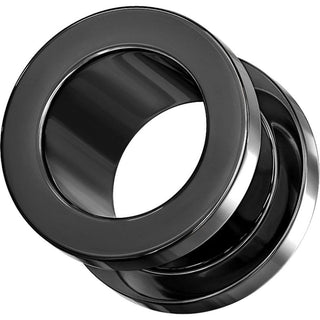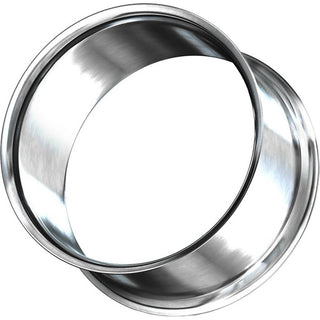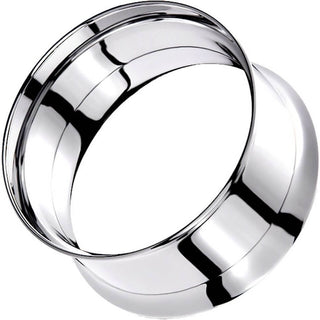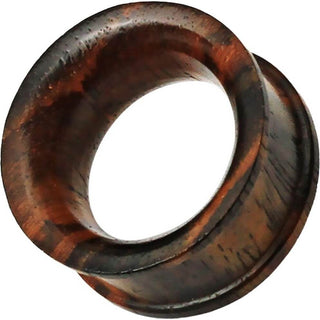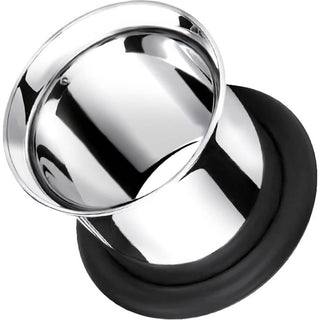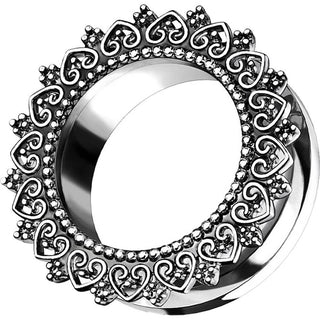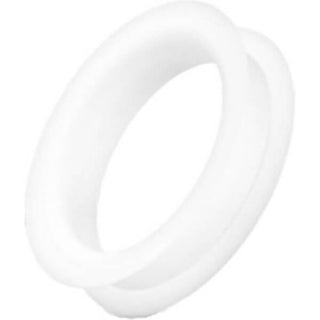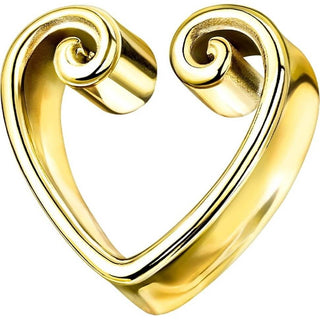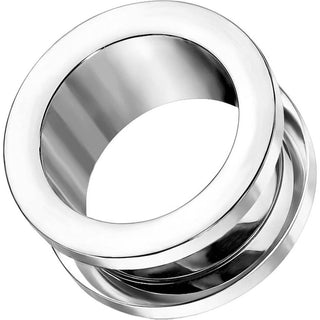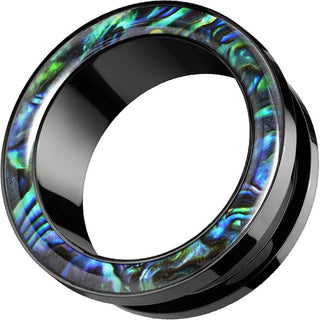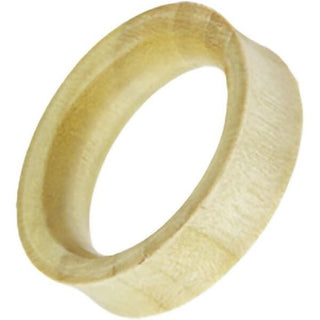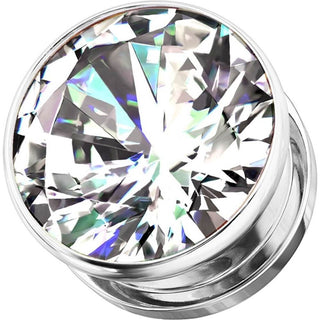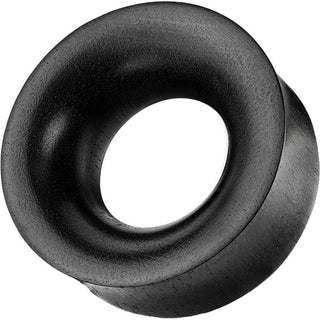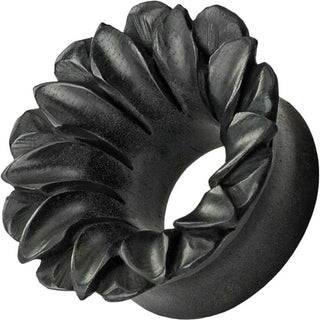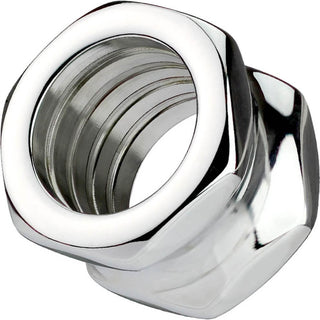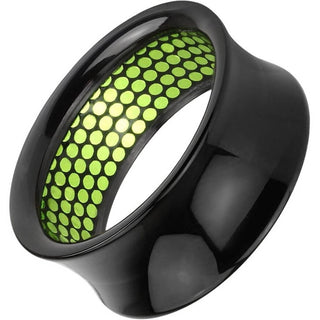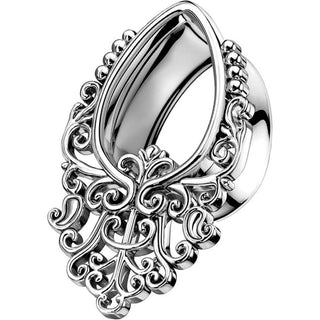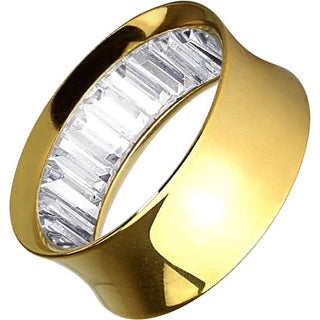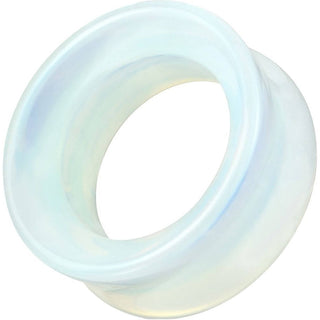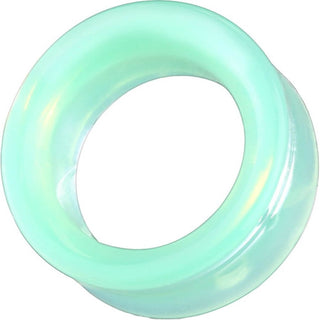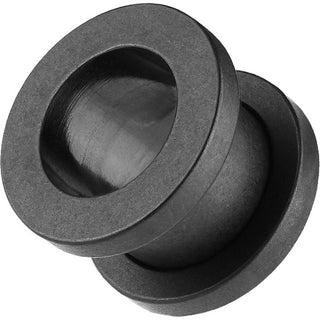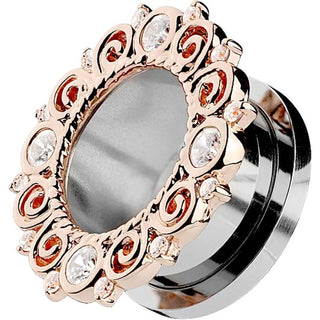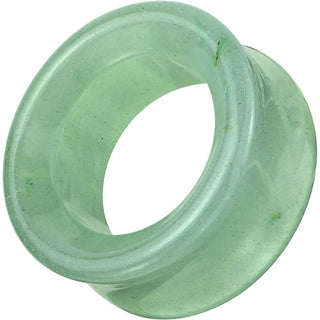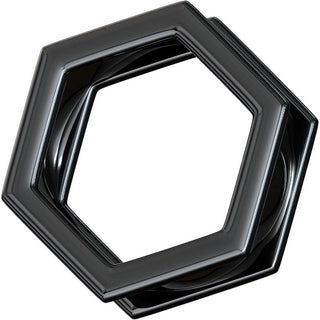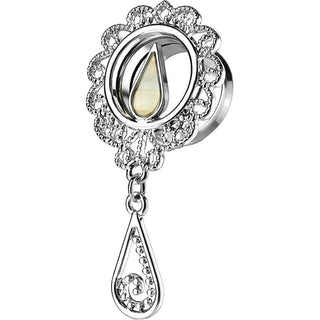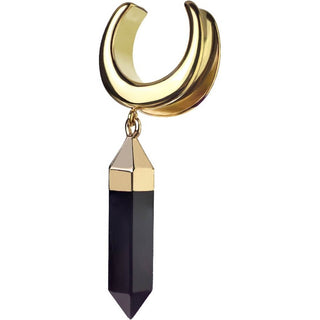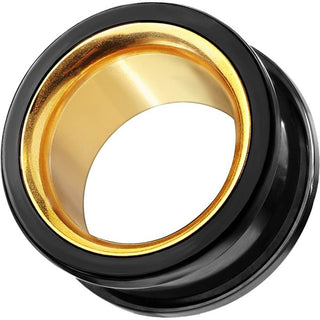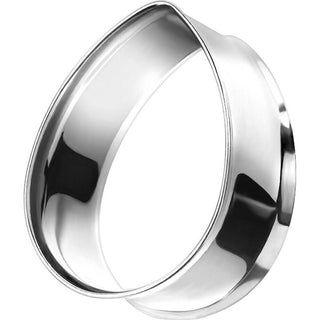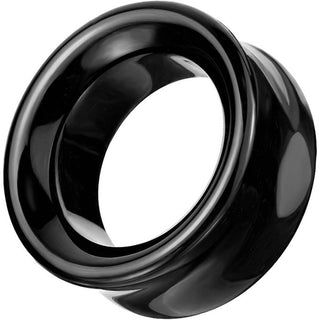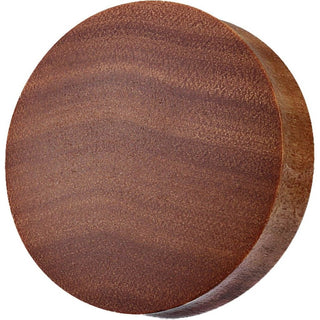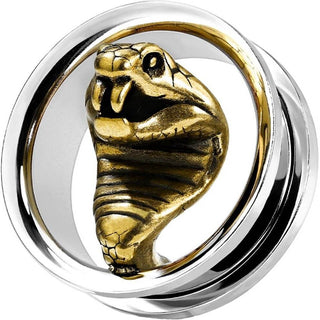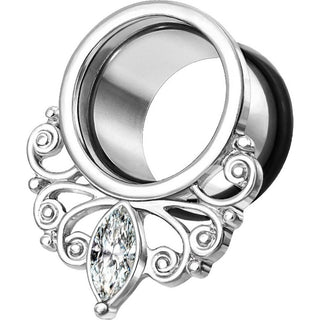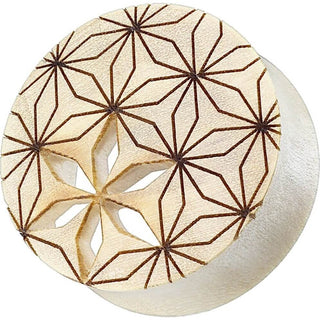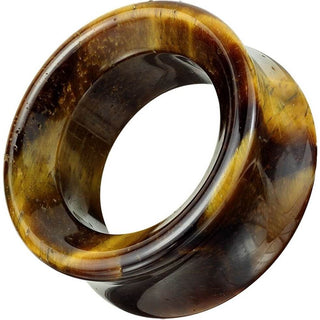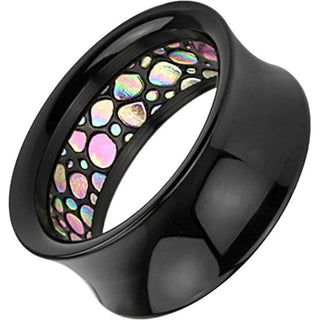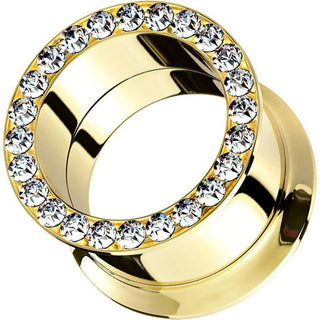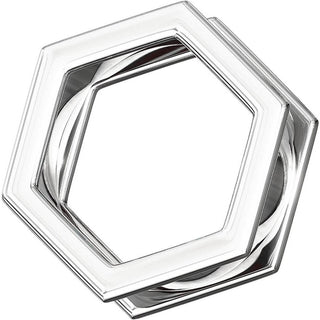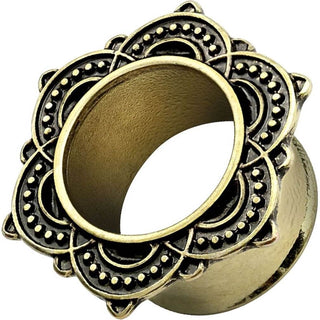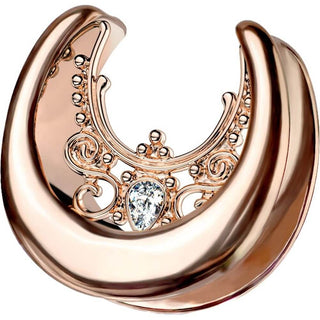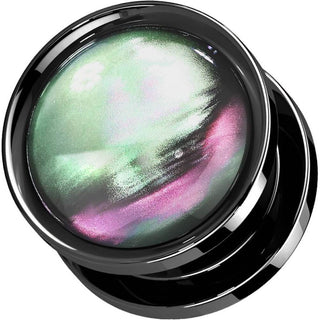Flesh Tunnel
Flesh tunnels and plugs
Flesh tunnels and plugs are body jewellery that are used to stretch piercing channels. Different [piercing] holes can be stretched to any extent. However, the Ear Piercing holes are most frequently dilated. From small 1-2 mm plugs to 50 mm tunnels, this trend offers the right look for every taste. While this type of piercing is popular with both women and men, the larger diameter tunnels are especially popular with men. In our shop you will find countless plugs and tunnels in different sizes, designs and materials. You can find out all the important information about tunnels and plugs here in this guide.
Piercing jewellery for tunnels and plugs
The difference between flesh tunnels and plugs is basically already clear in the name. Tunnels are pieces of jewellery for stretched earlobes that are hollowed out on the inside and through which you can see to the other end, just like conventional tunnels. Plugs, on the other hand, are jewellery that, so to speak, fill the hole ('to plug' from the English) and cover the entire ear hole. Unlike a flesh tunnel, an ear plug is not hollow.
Before you can wear tunnels or plugs, your ears have to be stretched first. There are many different types of stretching tools or Expander Piercing that can be used to widen the ear holes.
Tapers are a type of expander that are used to stretch the ear hole. Tapers are shaped like a straight pin that gets thinner towards one end and are held in place with two silicone O-rings. This elongated expander can be purchased in different bar thicknesses depending on the desired diameter. Sickle-shaped expanders have the advantage that they can be easily worn in the ear. Due to their low mass and their small shape, a crescent-shaped expander is not very noticeable in the ear, in contrast to an expander pin, for example, and can therefore also be worn as normal ear jewellery. The lobe can also be widened with the help of spiral-shaped expanders, the so-called expansion spirals or expansion screws. Because of their special shape, expansion spirals are often worn as Ear Piercing Jewelry. Both stretching crescents and stretching spirals can be worn overnight while sleeping, whereas this is not possible with a taper, due to the danger of getting caught during sleep. You can easily choose the right expander for your ears from our wide range of aesthetic expanders.
In our shop, tunnels and ear plugs are available in an infinite variety of colours and fancy designs. We also offer jewellery in many types, materials and shapes. From simple round and oval ear jewellery to flare tunnels with carved motives such as animals or stars, all possible variations are available here.
A Single Flare Tunnel / Single Flare Plug has a wider flared edge. The other side of the piece of jewellery, on the other hand, does not have a larger rim and is attached to the earlobe by a rubber O-ring. This simplifies the insertion enormously, but it has the disadvantage that the ring may come loose when worn and the ear jewellery could be lost. Depending on your taste, you can buy plain metal single flares or colourful single flares with beautiful colour gradients.
A Double Flare Tunnel has an outwardly curved edge on both the front and the back. The two larger edges make insertion into the lobe a bit of an effort, but the Double Flare Plug offers a perfect fit in the ear once it has been successfully inserted. Double flares in interesting shapes like flowers or coffins as well as our decorated double flare plugs and tunnels in vintage style express your individuality.
So-called no flare tunnels are the same size throughout and are fastened with two silicone O-rings on both sides. This type is particularly suitable for freshly stretched ears because there are no large components on the tunnel that could accidentally irritate or widen the tissue. Our No Flares with unusual shapes such as glass corks or cannonballs also offer beginners a unique look.
Screw Fit Tunnel and Screw Fit Plug are a type of tunnel that has a screw thread on the back (usually in the form of an external thread) that makes it easy to attach the ear jewellery. Fleshtunnels with screw threads are mainly made of metals like surgical steel or titanium, because not every material is suitable for the production of screw threads. In our shop you will find, among other things, filigree screw tunnels and plugs with sparkling zirconia stones in various colours and motives.
For the indecisive, Fake Piercing are a good alternative to test the piercing trend on your own ear before you start stretching your ear holes. With the large selection of Fake Plug Piercing available in our online shop, you can wear the look of a stretched ear hole without the long stretching process. The fake ear plugs are available in different colours and shapes as well as various unique style. The motive range from dragons, eyeballs and smileys to delicate zirconia or opal studded fake plugs.
Tunnel and plug materials
Overall, both organic and non-organic materials for plugs and tunnels offer advantages and disadvantages that should be considered when choosing ear Jewelry. In general, the disadvantages of natural materials are their non-sterilisability and the risk of cracks or splinters should the tunnel or plug fall off or not be maintained regularly. However, organic materials also offer various advantages, which in many cases outweigh the disadvantages and convince you to choose a natural material. Non-organic materials such as metals and plastics, for example, offer variety and flexibility, while the disadvantages lie in the possible formation of odours. The following summary of the advantages and disadvantages of the individual materials gives you an initial overview and should serve as an aid in choosing your ear jewellery.
HornHorn is a very smooth and organic material that is usually made into plugs from cow or buffalo horn. Body jewellery made from this material is very breathable and well tolerated. Flesh tunnels and plugs made of horn can therefore reduce the unpleasant odour that often occurs. In addition, the material weighs little when processed as jewellery and therefore does not stress the ear tissue. Unintentional stretching of the lobes is therefore not possible with this material. The insensitivity of horn to temperature is another advantage, making it pleasant to wear at any time of year. Ear Piercing jewellery made of horn should, however, be regularly maintained with oil, otherwise it can develop cracks. The disadvantage of horn is that, as an organic material, it is difficult to disinfect.
WoodThe great advantage of wood as a material for tunnels and plugs is the open-pored nature of this material, which ensures that the skin around the piece of Jewelry can breathe. This can prevent the odour that is typical of tunnels and plugs. Another advantage of wood is the wide range of colours and patterns, as there are many different types of wood available for processing. Particularly popular types of wood for plugs are, for example, ebony and rosewood. Furthermore, fleshtunnels made of wood are very comfortable to wear due to their light weight. However, as a natural material, wood cannot be sterilised. Regular care with oil and avoidance of water is essential to prevent cracks in this material.
StoneStone is a natural material that offers a wide variation of colours and patterns. Each piece of jewellery made from stone is unique. A slight odour is possible with this material, but this is rather rare in combination with regular care. Stone is a rather heavy material, which can strain the ear tissue and possibly stretch it unintentionally. This material takes on temperatures, which can be felt especially on the ear in extreme temperatures, e.g. in winter or summer. Since stone is also a natural material, stone tunnels cannot be properly disinfected.
Surgical steelFleshtunnels and plugs made of Surgical Steel Piercing have a very smooth surface and are resilient and scratch-resistant. Surgical steel body jewellery is therefore extremely durable. The robust material is also advantageous because it can be sterilised, especially for stretching tools, as there is less risk of bacteria and impurities being transported to irritated skin. However, surgical steel is not temperature-resistant, which means that both cold and hot temperatures are transmitted through the material to the skin.
AcrylicAcrylic flesh tunnels offer a colourful variety of ear jewellery. From single-coloured flesh tunnels and plugs to colourful mixed ear jewellery, many designs are possible here. Acrylic is a temperature-resistant material, which makes it comfortable to wear. The lightness of this material also contributes to the wearing comfort. One disadvantage of acrylic is that this material is not quite as durable as comparable jewellery made of surgical steel.
How do you get a tunnel?
A tunnel is not pierced immediately like normal piercings, but involves a relatively long stretching process that allows you to gradually widen the ear hole to the desired size. First, a normal [piercing] is made on the earlobe. This has to heal completely before you can start to widen the ear hole to a tunnel. After healing, the stretching process is carried out by the pierced person themselves with the help of e.g. Expander Piercing and can take several weeks to months, depending on the desired size. Alternatively, the stretching process can be carried out by the piercer himself/herself if the person does not feel confident to do the widening him/herself.
While the costs for the first step to a fleshtunnel, the piercing of a lob, are limited to about 10€ - 30€ depending on the studio, the utensils for the stretching must also be included in the cost of a tunnel. These vary depending on the shop. In our shop you will find these tools at reasonable prices and in high quality, so that you can start stretching your ear hole to a tunnel without any worries.
Stretching ear for tunnel
The ears should be patiently stretched in millimetre increments so as not to cause unnecessary damage to the tissue. Successful widening of the ears requires disciplined adherence to these stretching steps, between which there should always be sufficient time. The ears should only be widened to a larger diameter if the lobe has healed completely. The expander should always be worn in the ear until the next stretching step. This puts the lobe under continuous tension, which helps the ear to dilate evenly. Overstretching by widening too quickly should be avoided as this can have unattractive consequences such as inflammation or scarring.
The following times should be adhered to in the stretching steps to ensure uncomplicated widening:
1.2 mm to 1.6 mm = 4 weeks
1.6 mm to 2.0 mm = 4 weeks
2.0 mm to 2.5 mm = 4 weeks
2.5 mm to 3.0 mm = 4 weeks
3.0 mm to 4.0 mm = 8 weeks
4.0 mm to 5.0 mm = 8 weeks
5.0 mm to 6.0 mm = 8 weeks
6.0 mm to 8.0 mm = 8 weeks
8.0 mm to 10.0 mm = 8 weeks
The connective tissue of the ears is quite flexible and can grow back to its original size up to a certain diameter. As a rule, ear holes that have been widened to about 8 - 10 mm can grow back almost completely. The prerequisite for this is a slowly and correctly performed dilatation. Earlobes with a larger diameter are also able to shrink again, but they rarely return to the size of a normal lobe.
When stretching a dilated lobe back, the procedure is basically the same as for widening. Closing the lob should be done slowly and in small steps. After each step in which the diameter has been reduced, one should wait until the hole has contracted again to such an extent that the fabric lies with tension against the stretching tool. Only then can the next smaller size be inserted. These steps should definitely be followed instead of just taking the tunnel out and waiting for it to grow together. The result of this would be an uneven and scarred hole. Also, the larger the hole, the more protracted the process of retraction. Exactly how far the hole can retract depends on various factors such as age, sun exposure to the skin and the elasticity of the tissue. The elasticity of the tissue is in turn influenced by the speed of the previous stretching process. The slower the process, the more elasticity the tissue retains.
If the diameter of the fleshtunnel is too large to grow together naturally (> 30 mm), the hole can also be sutured shut. This procedure is done by a doctor, but in most cases the costs are not covered by health insurance.
Care and healing
As long as the stretching steps are performed at sufficiently long intervals and the skin is given enough time to recover, the pain from the widening is usually kept within limits. Most people experience the most pain the first time they stretch to a new size. This only lasts for a moment and decreases noticeably over the next few hours. Consequently, the tissue only takes a few days to heal. Nevertheless, there should be plenty of time between the individual stretches, because the longer Jewelry is worn in one size, the more the skin gets used to it. The tissue then becomes more supple and flexible over time.
To avoid inflammation or other complications of the fleshtunnel, it is recommended that the following care steps are followed each time you stretch:
First, the hands and any stretching jewellery should be thoroughly washed and disinfected. The ear should also be cleaned and disinfected. This prevents dirt and bacteria from penetrating the tissue.
The use of oil after disinfection can help to make the skin tissue more supple as well as prevent tearing of the ear hole. Tunnels and plugs made of certain materials such as wood benefit particularly from care with oil, as this can also prevent cracks in the ear jewellery.
If you do not want to use oil, you can also use a piercing gel to care for the earlobes and prevent the skin from drying out.
Encrustations can form on freshly stretched lobes. These should be softened with water and then gently removed.
A frequently observed problem with this type of body jewellery is an unpleasant odour that comes out when worn for a longer period of time. This is caused by the combination of sweat, dirt, sebum and skin particles that form between the extended ear and the jewellery. This is a typical problem especially in tunnels with a larger diameter, as there is more stretched tissue available for this build-up. To prevent this odour, regular and thorough cleaning of the flesh tunnels and plugs is highly recommended. Once the body jewellery has healed completely, it is sufficient to remove it from the ear once a day and clean both the ear and the ear jewellery briefly with clear water and mild soap.
Tip: Cleaning while showering is particularly easy and the likelihood of forgetting this important care ritual is also reduced with this combination.
How to insert tunnels and plugs correctly?
In general, for easier insertion, the ear hole can be rinsed with warm water beforehand to loosen the tissue. Sparingly using e.g. oil, Vaseline or another mild cream on the earlobe can also make the process easier.
Inserting screw tunnels is quite easy. This type of fleshtunnel has a screw thread on the back which can be easily screwed into the ear hole. In addition, screw tunnels offer a firm and comfortable fit in the ear due to their type of closure.
Single Flare Plug are very easy to insert. This type of tunnel is particularly suitable for beginners, as single flares are simply fastened with a rubber O-ring on the back. [no-flare-tunnel] are just as easy to insert, as they are fastened in a similar way to the Single Flare Tunnel with two rubber O-rings. The [no-flare-plug] is slightly longer so that it can be easily inserted into the hole and secured on both sides with the O-rings.
When inserted, Double Flare Plugs can appear complicated at first glance due to the flared edges on both sides. However, with a little practice, they are not much more difficult to insert than plugs and tunnels that are the same size throughout. Double flare tunnels are best placed at an angle on the ear hole and slowly pushed into the hole starting with the top half. Once the top half of the double flare plug is in place, the rest of the plug slides easily into the piercing hole. The two curved edges of the flare tunnel then ensure a perfect fit without slipping.
The insertion of each type of tunnel and plug should ideally succeed without pain or strong pulling. If insertion hurts, the tissue has not yet healed properly. In this case, you should reinsert the Expander Piercing bar and wait one to two weeks until the ear hole is completely healed.
Risks
Stretching the ear holes can often involve risks if not done correctly. Common problems include inflammation, swelling and redness caused by stretching too quickly. With each stretching step, micro injuries and tears are added to the earlobe, which make the widening of the tissue possible. However, these also make for extremely delicate tissue that is more susceptible to inflammation. Inflammation of a fleshtunnel can be manifested by severe pain, redness as well as bleeding and the formation of pus. If these signs occur, it is important to seek the advice of a piercer on how to proceed.
If the hole is stretched to the next larger diameter too early in the stretching process, this can also lead to a tearing of the ear hole. In the worst case, the earlobe can also tear through. However, this usually only happens with thin lobes that are severely overstimulated. By patiently and conscientiously following the stretching steps, you can avoid the danger of a torn earlobe.
Widening too quickly can also lead to a so-called blowout. In a blowout, a thickening forms at the hole of the fleshtunnel and the tissue bulges outwards from the inside. In this case, it helps to insert ear Jewelry in smaller diameters and to use saline solution in which the tissue should be soaked for about 10 minutes. In order to avoid a blowout from the outset, patience is again called for during the stretching steps.
The aforementioned unpleasant smell that can arise when wearing tunnels and plugs is also a risk that you should be aware of. However, this can be counteracted with regular care and the choice of a breathable material (e.g. wood or horn).


